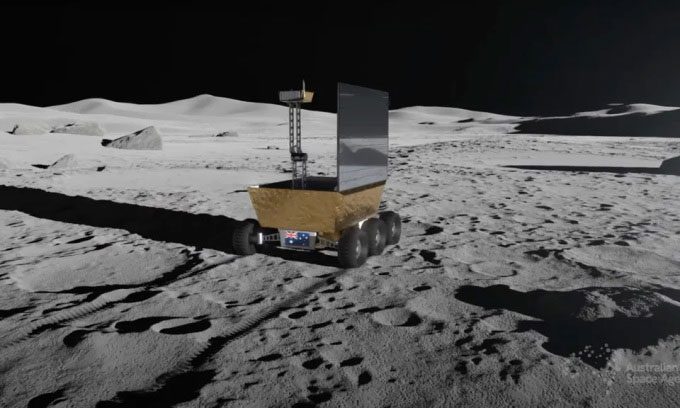The Australian Space Agency announced on September 5 that the country plans to send its first robot to the Moon as part of NASA’s Artemis mission in the coming years.

Simulation of Australia’s first exploration robot on the lunar surface. (Photo: Australian Space Agency).
“Using Australia’s world-leading remote operation technology, the robotic rover will collect lunar soil, known as regolith. NASA will attempt to extract oxygen from the samples. This is a crucial step towards establishing a sustainable human presence on the Moon,” said the Australian Space Agency (ASA).
The robot has not yet been named, and ASA is launching a competition to name this pioneering robot. Australian residents can participate until the deadline of October 20. ASA will select four favorite names, which will then be put to a public vote. The winning name is expected to be announced in early December.
NASA is working to establish a sustainable human presence on and around the Moon by the late 2020s through the Artemis program. The knowledge and skills gained during this process will aid humanity in reaching the next significant goal – launching a crewed mission to Mars.
To date, NASA has successfully deployed one mission under the Artemis program, which is Artemis 1. In this mission, the uncrewed Orion spacecraft flew to lunar orbit and returned to Earth in 2022. NASA is preparing for the next mission, Artemis 2, aimed at sending four astronauts on a flyby around the Moon. Artemis 2 is scheduled for launch in late 2024. The subsequent mission, Artemis 3, will land astronauts near the Moon’s South Pole by late 2025 or 2026, if all goes according to plan.
NASA is leveraging commercial and international partnerships to achieve the ambitious goals of Artemis. The involvement of Australia’s robotic rover in the upcoming Artemis mission is one example. Additionally, the European Space Agency (ESA) is providing equipment modules for the Orion spacecraft, and SpaceX’s Starship will be the first crewed lunar lander of the program.


















































